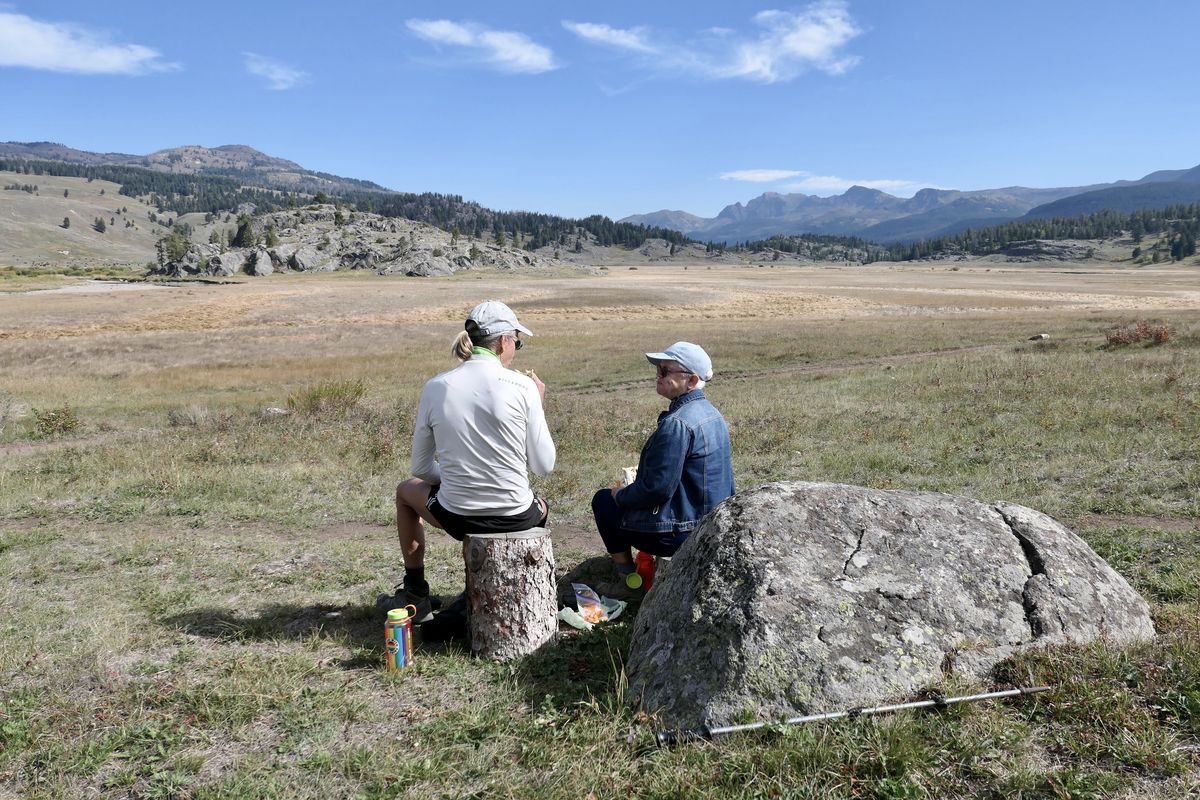Yellowstone and the Grand Tetons well worth the journey

It’s nice to have Yellowstone National Park as your living room. Grand Teton National Park is pretty spectacular, too.
As we begin year four of RV life on the road, we’re finding that beautiful places like these don’t get old. And thanks to our tiny home on wheels, we can open our door and step right out into these magical worlds.
During our stay in Yellowstone, the stunning Lamar Valley was one of our rather ample living rooms. The picturesque Norris Geyser Basin was another. And at Grand Teton, the jagged Teton Crest hung above our campsite like a giant painting, too stunning to be real.
We began our latest trip right after Labor Day, rolling through Montana and the Paradise Valley to Yellowstone, America’s first national park. It’s also one of America’s most visited national parks, so dealing with crowds is part of the admission.
OK — bison are cool, right? We like them too. But Yellowstone has thousands of these beasts, and every time one gets close to the road, watch out: A traffic jam ensues, with people hopping out of their cars in the middle of the roadway, pointing their cameras and cellphones. Hey, folks: Just how many bison photos do you need?
Thankfully, we found plenty of ways to enjoy our picturesque living rooms without driving. Wonderful hikes at Pebble Creek and Slough Creek in Yellowstone got us into scenic locations away from the crowds, and late in the day, we often found that day-trippers were gone, leaving us relatively alone. That’s the beauty of being able to stay inside popular parks like Yellowstone and Grand Teton.
Here are a few additional challenges…
Power issues: Obviously, we want to stay inside the national parks whenever we can and in most instances, that means dry camping. We had a wonderful stay at Pebble Creek Campground in the northeast corner of Yellowstone, however two days off-power proved difficult. We’re finding that our 2017 Thor Gemini doesn’t hold battery power for more than a day at a time when we’re off the grid, meaning that we must run the generator for hours to recharge and generators aren’t allowed at Pebble Creek. Yes, we know that we need to get some solar power. We’re shopping right now, because we have some long stays off the grid planned for later this year.
Commercial options: Many of the nation’s best national parks also have excellent commercial options inside and outside their boundaries. At the Grand Canyon, for instance, we’ve stayed at Trailer Village, a full-hookup park on the South Rim. It’s not cheap, but worth it to have power, water and sewer in the middle of winter. And outside most national parks, you’ll find other good options. Example: We had a lovely stay at the wildly popular Yellowstone’s Edge RV Park in Montana’s Paradise Valley just north of the park, where we watched the picturesque Yellowstone River roll past our campsite and feasted on wild coho salmon we brought from the Northwest.
When commercial operators fail: Yellowstone has campgrounds run by the National Park Service and by Xanterra, a concessionaire. Pebble Creek, run by the NPS, was a delight. Canyon Campground, run by Xanterra, was … well, indifferent. Everybody on staff at the Canyon Campground seemed to be counting the days until the season was over.
Getting that primo campsite: While there are opportunities for first-come, first-served spots, it’s not really possible to show up in a popular national park and expect to have the perfect campsite. You need to plan ahead, with the best sites often booked six months in advance when they become available. Be ready on the Recreation.gov website as soon as the booking window opens for any trip you’re planning. That’s especially true for peak seasons like summer.
